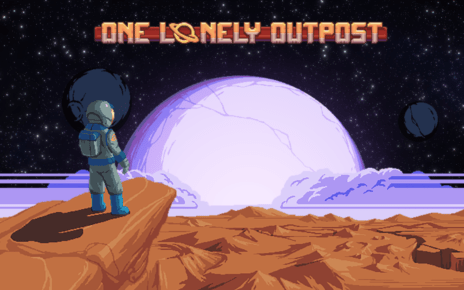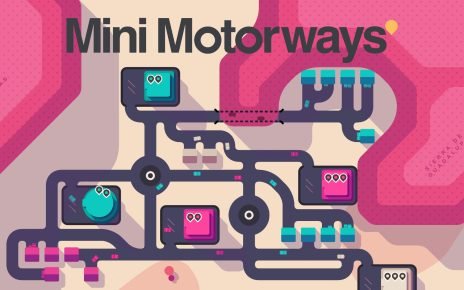Touhou Project occupies an unusual niche in indie gaming. Unlike most franchises, its creator (ZUN/Team Shanghai Alice) is comparatively looser with allowing/licensing games using its world and characters. As a result, the catalog of Touhou games is as massive as it is diverse. Although the original series is predominantly known for bullet hell games about cute girls engaging in whimsical yet spectacular magic battles, you can find a Touhou game made in all kinds of different styles and genres. This means there’s a wide spectrum of quality, ranging from some excellent games like Luna Nights to some fairly basic “X with a Touhou reskin” clones. This brings us to the game at hand, Touhou Mystia’s Izakaya.
Touhou Mystia’s Izakaya is developed by Dichroic Purpilion (also listed as Dichromatic Purpilion), and published by Phoenixx Inc., who have helped bring over several licensed Touhou games from Asia. Instead of an action-oriented genre, Mystia’s Izakaya is a casual restaurant management simulator. While it has been out for PC for a while, this release is for the Switch version complete with all of the DLC in the game from launch. So let’s see if this izakaya can cook, shall we?

Girls Are Now Preparing…
Touhou Mystia’s Izakaya stars Mystia Lorelei (originally from Touhou 8: Imperishable Night), a girl based on the Japanese night sparrow youkai (a spirit in Japanese folklore). She’s a bit of a low-class airhead of a youkai who runs an izakaya (basically a casual Japanese tavern), selling her signature grilled lamprey and sake. Throughout the game, she seeks to expand her establishment in order to gain enough money to finance her dream of performing a concert. As restaurants are businesses and expansion requires plenty of money, she regularly has to borrow money and go into debt to pay it off. There’s also a looming (and familiar) threat that wrecked her izakaya at the start of the game, which she has to reset and rebuild from (due to a chance encounter to reset the timeline) and hopefully prevent from repeating. Another day in Gensokyo, really.
This game uses a calendar system, where you go through days in cycles of about two weeks. You need to accrue enough money during these days to pay off debts in ever-increasing amounts. During the daytime, you can travel around Gensokyo, talk to non-player characters (NPCs) and prepare for the evening. During the nighttime, you manage the izakaya, where you cook and serve food and drink to hungry patrons.
It’s a rather straightforward and relaxed gameplay cycle. While this can feel repetitive, its casual and simple style belies how addicting it can be.

Daytime
The daytime sections of this game are typically about prep. You’re given eight in-game hours in a day to work with, with most actions taking a half hour apiece. You can harvest ingredients from resource points, such as fish or fruit, while walking around. You can also buy ingredients from vendors, which costs money instead of time, and is typically the more practical way to get ingredients in bulk. If you want, you can also prepare meals ahead of time for the night portions, although this is often an inefficient use of time unless necessary for an objective.
Also during the day, you can interact with the various residents of Gensokyo. Plenty of familiar faces found in most Touhou games hang out around their usual locations (e.g. Reimu is typically at the Hakurei Shrine, Sakuya at the Scarlet Devil Mansion, etc.). You can perform various tasks (quests) for both the generic and major NPCs, and these often yield rewards of ingredients or new recipes, which are key to expanding your izakaya’s menu. There is a sort of bonding level system with most major NPCs, although it’s relatively limited in scope. This allows you to get new recipes from these characters, or to unlock the ability to invite them (and increase the chances of a yes), ask for drinks, or unlock a unique bonus.
This part of the game is usually on the chill side, and I generally enjoyed the low-stress time management aspect. This release also comes with all downloadable content packs (which were originally sold separately on PC) from the get-go, which expands the number of areas, NPCs, and recipes by a lot, offering plenty to see and do. Although the DLC expands the game considerably, the added content opens up gradually as you progress, keeping it from being overwhelming. That said, the day portions could sometimes get a bit mundane after enough time in between significant story sequences.

Familiar Faces
Touhou is infamous for being hard to approach due to how massive its cast of characters is, especially spinoffs/”fangames” like this. They tend to do little to introduce newbies to these characters, as it’s kind of expected that people going in are already familiar to some extent. After all, it’d get tiresome if every game spent time reintroducing fans to these characters. If you’re not familiar with Touhou, you might be just a bit lost in trying to understand everything that’s going on. With that said, the series usually has a whimsical and light tone to begin with, and it’s not especially important to be familiar with everything going on to enjoy the charming exchanges. While there are some occasional moments you just have to roll with, you can usually piece things together.
For what it’s worth, I think Touhou Mystia‘s Izakaya is easy enough to follow along for newcomers, just as long as you can just kind of roll with things. I particularly like that there’s a page in the menu with all of the major characters where Mystia has a little description of all of them (which expands as your bond level goes up). This is a nice touch that adds some flavor text and personality, while also giving a bit of that franchise lore/backstory without having to inject it into the story proper if you want it.
For longtime Touhou fans, Mystia’s Izakaya generally hits more of the tonal aspects of Touhou than its mechanics. Outside of its presentation and major NPCs using Spell Cards (more on that in the Nighttime section), there are not really a lot of common gameplay elements of Touhou at play here. This is honestly fine for me, as I’d rather them stick to making something that works well on its own rather than having to find a way to shoehorn bullet hell elements.

Nighttime
The meat and potatoes of the game (both figuratively and literally) is at night. Here, Mystia opens her izakaya and you can begin serving food and drinks to patrons. As a restaurant simulator, Touhou Mystia’s Izakaya is remarkably streamlined. You pick a selection of items to serve for the day, typically based on how many tools and ingredients you have, and most menuing is pretty simple.
Most normal patrons come with basic and quick orders. While your goal is obviously to make money, the game also further incentivizes player consistency and speed by having a combo counter. Although serving food and drink is a simple process, I found it fun trying to max out my combo and earnings on any given night.
There are also rare and special guests, which are the named major NPCs. These typically have more ambiguous orders, asking for food and drink by descriptors rather than specific items (though these are easy enough to intuit). While these often don’t adhere to the day’s preset menu, you can make anything you have a recipe and cookware for. If you annoy them, they’ll use a spell card against you which typically manifests as a debuff (e.g. temporarily disabling a cooking appliance). If you nail their order, they reward you with a spell card that typically provides a buff (e.g. dishes cook faster or you get free ingredients).
While you can stick to recipes, you can also add additional ingredients suited to individual customers’ tastes as long as the recipe is compatible. This is often how you make customers the most happy and get those buffs and better tips at the cost of burning through your limited ingredients. This adds that extra little bit of depth with the decision-making and resource management aspect that this game is otherwise pretty lenient with. There’s also a little rhythm microgame during cooking (because Mystia likes to sing), which felt kind of unnecessary, but it’s at least an extra flourish that kept me from going on autopilot.
While this game maintains a relaxed tone and has rather easy mechanics to grasp, it can still be rather addicting to play. Trying to get everything right and maximize earnings is rewarding and fun in and of itself.

Slow Cooker
Despite how addicting it can be, I do think it’s best enjoyed in shorter play sessions rather than longer ones. I don’t think this is a problem per se, as there is a place in gaming for easier and low-stress games to wind down and chill out with, and I think this is where Touhou Mystia’s Izakaya fits best.
With that being said, I wish the game did a bit more to challenge me. The game involves managing finances and resources, but this will very rarely be an issue if you are even remotely trying. The amount of debt you have during each two-week section of the game is low enough to almost be a non-factor, and I spent most of my money on shop expansions rather than conserving for debt requirements.
The game gives you so much time to accrue money that I just skipped a few nights (which you can do by sleeping in Mystia’s bed) just to advance the calendar more quickly. I also felt there was maybe one too many two-week cycles I needed to get through before I could actually reach the credits.

Ease of Play
Managing the restaurant is easy. You can usually take your time with most customers if you’re trying at all. You’re also unlikely to screw up rare guests’ orders after you get their entry in your notebook, so it’s rare to see their punishing spell card. You can also hire up to three workers, and they can pull so much weight without making mistakes that they enable the game to largely play itself while only taking a small cut.
About the only other curveball the game throws at you is in the form of Tewi Inaba, a mischievous rabbit (also from Touhou 8). When she shows up, there’s a decent chance she’ll ask you to buy some price-gouged luxury items, and refusing her breaks your combo instantly if you don’t have a certain buff. As annoying as Tewi can be, I honestly kind of wish that there was a wider variety of obstacles like her in the game to keep things interesting. She’s also somewhat easy to circumvent.
One aspect of the game I did find to be challenging was the handful of trial missions. Because you can’t bring your workers, you have to do everything yourself, and efficiency genuinely matters. These are about the closest thing the game has to “boss levels”, and the final one serves as the game’s final challenge before the credits. I found these fun in how they actually tested me, even if they felt a bit long. I wish the game had more challenges of this variety.
Ultimately, Touhou Mystia’s Izakaya is a game where much of the fun comes from what you want to get out of it. If you want it to challenge you, there are likely better restaurant and business sim games. Most of my fun came from trying to optimize things on my own and do as much as possible rather than just doing what the game requires of me. But even with its simplicity, it was fun to get into the groove of.

Presentation
For simpler games like this, having a strong presentation is vital. Fortunately, this is an aspect Mystia’s Izakaya shines in.
The pixel art in this game is as delightful as it is cute. While the overworld sprites and backgrounds are a bit on the simple side, they get the job done. The character portrait sprites and pixel art CGs are very well done, and the game is plenty pleasant to look at. At times the HUD can be a bit much, and some aspects take getting used to, but this is a minor gripe with an otherwise nice-looking game.
Touhou as a franchise may be defined more by its music than almost any other series. Thankfully, the soundtrack for Mystia’s Izakaya is absolutely incredible. The arrangements of many classic Touhou tunes in this game fit the vibe immaculately, with all sorts of comfy jams and entrancing melodies that elevate what could have easily been a dull experience. Many compositions use soft and very folk-ish instruments that are quite nice on the ears. In particular, the theme that plays in Youkai Mountain during the daytime (a slow and pretty rendition of Touhou 10: Mountain of Faith’s stage 3 theme) is one of my favorite arrangements of any piece from the series.
The script for the game is Touhou’s usual whimsical, upbeat style. There are plenty of jokes and lighthearted exchanges between characters that keep the tone from ever feeling too serious. I found it enjoyable just talking to NPCs every now and then just to see what they’d say, even if they didn’t always get the feel quite the best (given every writer for these characters does things just a bit differently across games).
One small issue I have is that some of the humor is a bit reliant on pop culture references and memes that have already aged, though it’s hard to tell how much of that is the localization or the game itself (given some of the art also references these). Speaking of translation, the script is largely fine outside of the periodic typos, though it throws in some odd gratuitous Japanese for the sake of it (e.g. the use of the word “nani?” in place of “what?”) that might read a little weird to less familiar players.

Verdict
Touhou Mystia’s Izakaya is a rather low-maintenance game, yet surprisingly addicting at times. A strong presentation, lighthearted tone, and relaxing gameplay loop made it an enjoyable experience. It does drag just a bit in places, and I think Dichroic Purpilion could have implemented a few more tricky mechanics to deal with in order to spice things up, but I think what we ended up with was still solidly fun. What keeps Mystia’s Izakaya from reaching even higher heights isn’t so much in its mistakes, but rather that it doesn’t do a lot that truly goes above and beyond. I still liked a lot of what I ended up playing plenty though!
This Nintendo Switch version of the game comes with all six packs of DLC, resulting in a large cast and a lot of additional content that is pretty seamlessly integrated into the game, giving you plenty of options during and after your main playthrough. While the game’s systems are limited in overall scope, there’s no shortage of things to do. It might not be to everyone’s tastes, but there’s still plenty of enjoyment to be had.
TOUHOU MYSTIA’S IZAKAYA IS RECOMMENDED

Enjoy anime style games? You might be interested to read this review of Granblue Fantasy: Relink.
Many thanks to Phoenixx Inc for providing a Nintendo Switch review key for this title.
Been playing games since my papa gave me an NES controller in the early 90’s. I enjoy games of almost all genres, but especially role-playing, action, and puzzle-platform games. Enjoyer of many niche things ranging from speedrunning to obscure music from all over the world.




